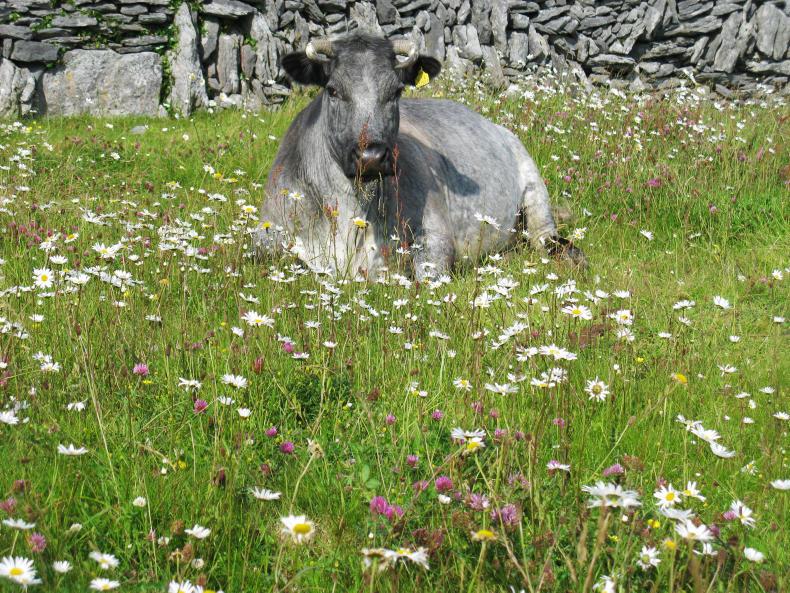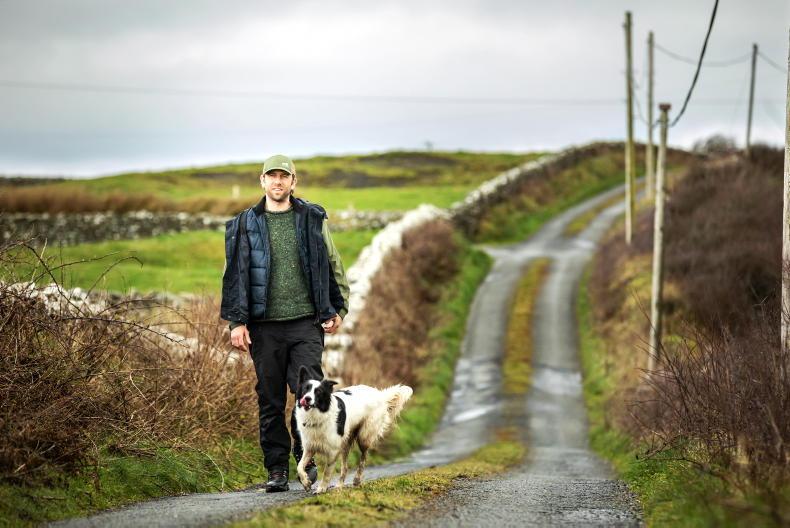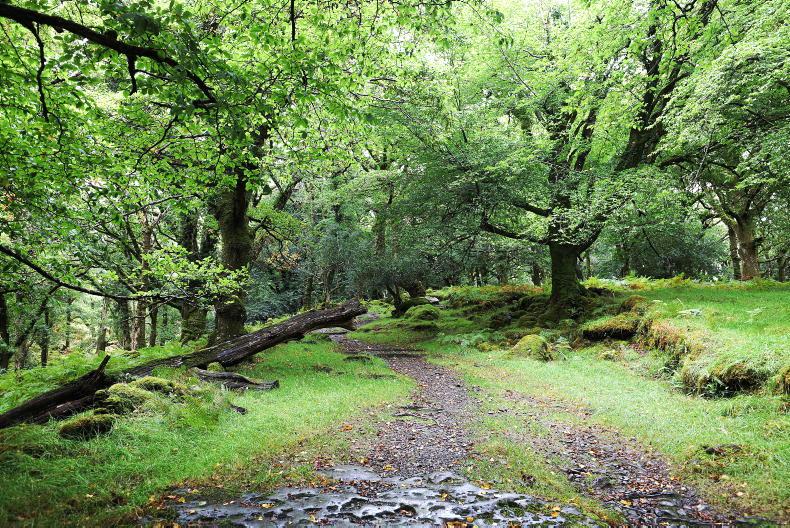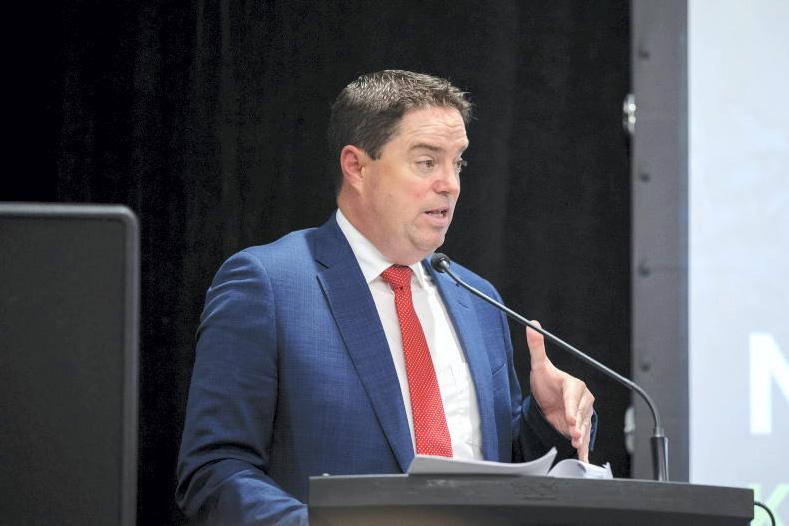Wildlife habitats such as hedgerows, field margins, woodlands, streams, wetlands, peatlands and ponds are common on farmland. Some farms have few habitats, while, on others, the whole farm is an extensively grazed wildlife habitat that supports both farming and nature.
All farmers can help to halt the decline in farmland biodiversity, either by protecting and managing existing habitats or creating new ones where needed.
The continuous decline in farmland biodiversity is happening throughout the world. This is concerning, because in addition to the cultural and recreational values associated with wildlife, biodiversity itself plays an important role in the provision of goods such as food, fuel and fibre.

Intensive dairy landscape where habitats such as hedgerows, treelines and fenced riparian buffers, deliver multiple benefits for biodiversity, carbon storage and water quality.
While perhaps less obvious, habitats and species also provide important benefits to agricultural systems, including nutrient cycling in soil, flood prevention, carbon storage, pollination and regulation of pests and diseases (all commonly referred to as ecosystem services). A decline in farmland biodiversity will reduce the delivery of these services.
The Irish Government declared a climate and biodiversity emergency in 2019
Biodiversity now features strongly on Irish and EU public agendas. The Irish Government declared a climate and biodiversity emergency in 2019, and just last week, the EU published its biodiversity strategy for 2030. There is also an increasing awareness of the value of biodiversity on farmland and a growing commitment among the farming community to implement farm-scale actions to better protect nature. Nature conservation in Ireland is dependent on these farm-scale efforts.
Farmland wildlife
Emerging research and policy agendas are based on sustainable management of agricultural land. Objectives in the Food Wise 2025 report and proposals for the new Common Agricultural Policy (CAP) include the need for effective methods of wildlife conservation in sustainable production systems.
Sustainable agricultural systems can deliver food production, along with environmental standards, nature conservation and the provision of ecosystem services. These issues are a key element of ongoing discussions about CAP reform.
Quantity of habitats: Many Irish farms perform well with regards to the quantity of wildlife habitats they support. In surveys of Irish farmland, habitat quantity is, on average, 7% to 10% of the farm area on more intensively managed farms and substantially higher on more extensive farming systems. This bodes well for the anticipated recommendations under the next CAP and biodiversity strategy for 2030, where all farms may be expected to retain a certain amount of habitats.Retention of existing habitats is important, as they typically have a higher biodiversity benefit compared with newly created habitats. The exact amount of wildlife habitat that must be retained, and which habitats will be eligible, will be determined by individual member states.
Habitats such as heath, peatland, ponds and scrub are currently deemed ineligible under cross compliance, despite their ecological importance. Research indicates that the inclusion of a greater variety of habitats will make reaching habitat targets more achievable. This will also protect a greater range of habitats and the ecosystem services they provide.
Quality of habitats: In addition to habitat quantity, habitat quality is also extremely important for the protection of plants, insects, mammals and birds, especially rare species. Good-quality farmland habitats support more wildlife, but also help improve water quality, biological control of pests and diseases and carbon storage. To date, European agri-environment policy has rarely focused on habitat quality. Although hedgerows are a common feature of our landscape, a recent Teagasc study on intensive farms found that the majority of hedgerows sampled were of low quality (largely due to being over-managed).
Among the proposals for the next CAP is an increased emphasis on results-based approaches to address the decline in habitat quality. Previous agri-environment schemes (such as REPS) employed traditional action-based payments to incentivise landowners to implement measures (with an assumption that these would deliver the objectives).
Results-based payments provide farmers with performance-related payments for actual delivery of agreed environmental objectives. Higher payments are made for achieving higher assessment scores, which deliver higher habitat quality, more indicator species, improved soil health and better water quality.
In Ireland, there are a number of results-based projects and programmes (including the Burren Programme and the Pearl Mussel Project). Many of these have been described in the recent publication Farming for Nature: The Role of Results-Based Payments, published by Teagasc and NPWS (www.teagasc.ie/environment/biodiversity--countryside/farming-for-nature/).
To date, many of the results-based projects in Ireland have targeted more extensive farming landscapes. However, results-based approaches can also be designed for more intensive enterprises. An example of this can be seen in the Bride Project (www.thebrideproject.ie), based in the heart of intensive dairy country in northeast Cork and west Waterford. This highlights that different regions, enterprises and intensities require different measures and that a one-size-fits-all approach is not always the best idea.
Biodiversity for environmental
sustainability
Food companies are placing increased emphasis on nature-friendly production practices. Sustainability accreditation is also increasing its requirements for inclusion of biodiversity in benchmarking of environmental sustainability.
Many Irish agri-food companies are seeking environmental accreditation through benchmarking against internationally recognised benchmarks and standards
Many sustainability schemes place a strong focus on environmental themes that typically include nutrient management, reduction of greenhouse gas emissions, water quality and soil management. However, sustainability will not be measured by these alone and biodiversity is becoming increasingly important to include.
Many Irish agri-food companies are seeking environmental accreditation through benchmarking against internationally recognised benchmarks and standards, such as the Farm Sustainability Assessment (FSA) tool (www.saiplatform.org). In relation to biodiversity, its main elements include, for example, retention of native habitats (wetland, peatland, and protected grassland), provision of a habitat map and identification of priority actions.
Such approaches ensure that farmers get sufficient credit for the protection and enhancement of wildlife habitats.
Teagasc research is investigating cost-effective ways of compiling farm habitat maps and is currently testing this approach on some of the farms in the Teagasc National Farm Survey, as part of the EU SmartAgriHubs project.
Up to now, public payments (from the Government) have dominated the provision of environmental public goods (such as ecosystem services). But in future, we may see greater interest in public-private partnerships that result in some combination of public and private (market-based) payments for the delivery of higher levels of environmental sustainability.
It is important for farmers to protect both the quality and quantity of wildlife habitats on farmland – in order of priority; retain, enhance and only then create habitats. Farming systems, from intensive to extensive, pose different challenges and different solutions. Results-based approaches, designed for systems ranging from high nature value farmland to intensive dairy, help address these challenges.Sustainability assessment needs to incorporate biodiversity metrics or else the credibility of sustainability claims will be reduced.Dr Daire Ó hUallacháin, is a Senior Research Officer, Ecology and Water Quality at Teagasc.
Dr John Finn, is Principal Research Officer, Agricultural Ecology at Teagasc.
Wildlife habitats such as hedgerows, field margins, woodlands, streams, wetlands, peatlands and ponds are common on farmland. Some farms have few habitats, while, on others, the whole farm is an extensively grazed wildlife habitat that supports both farming and nature.
All farmers can help to halt the decline in farmland biodiversity, either by protecting and managing existing habitats or creating new ones where needed.
The continuous decline in farmland biodiversity is happening throughout the world. This is concerning, because in addition to the cultural and recreational values associated with wildlife, biodiversity itself plays an important role in the provision of goods such as food, fuel and fibre.

Intensive dairy landscape where habitats such as hedgerows, treelines and fenced riparian buffers, deliver multiple benefits for biodiversity, carbon storage and water quality.
While perhaps less obvious, habitats and species also provide important benefits to agricultural systems, including nutrient cycling in soil, flood prevention, carbon storage, pollination and regulation of pests and diseases (all commonly referred to as ecosystem services). A decline in farmland biodiversity will reduce the delivery of these services.
The Irish Government declared a climate and biodiversity emergency in 2019
Biodiversity now features strongly on Irish and EU public agendas. The Irish Government declared a climate and biodiversity emergency in 2019, and just last week, the EU published its biodiversity strategy for 2030. There is also an increasing awareness of the value of biodiversity on farmland and a growing commitment among the farming community to implement farm-scale actions to better protect nature. Nature conservation in Ireland is dependent on these farm-scale efforts.
Farmland wildlife
Emerging research and policy agendas are based on sustainable management of agricultural land. Objectives in the Food Wise 2025 report and proposals for the new Common Agricultural Policy (CAP) include the need for effective methods of wildlife conservation in sustainable production systems.
Sustainable agricultural systems can deliver food production, along with environmental standards, nature conservation and the provision of ecosystem services. These issues are a key element of ongoing discussions about CAP reform.
Quantity of habitats: Many Irish farms perform well with regards to the quantity of wildlife habitats they support. In surveys of Irish farmland, habitat quantity is, on average, 7% to 10% of the farm area on more intensively managed farms and substantially higher on more extensive farming systems. This bodes well for the anticipated recommendations under the next CAP and biodiversity strategy for 2030, where all farms may be expected to retain a certain amount of habitats.Retention of existing habitats is important, as they typically have a higher biodiversity benefit compared with newly created habitats. The exact amount of wildlife habitat that must be retained, and which habitats will be eligible, will be determined by individual member states.
Habitats such as heath, peatland, ponds and scrub are currently deemed ineligible under cross compliance, despite their ecological importance. Research indicates that the inclusion of a greater variety of habitats will make reaching habitat targets more achievable. This will also protect a greater range of habitats and the ecosystem services they provide.
Quality of habitats: In addition to habitat quantity, habitat quality is also extremely important for the protection of plants, insects, mammals and birds, especially rare species. Good-quality farmland habitats support more wildlife, but also help improve water quality, biological control of pests and diseases and carbon storage. To date, European agri-environment policy has rarely focused on habitat quality. Although hedgerows are a common feature of our landscape, a recent Teagasc study on intensive farms found that the majority of hedgerows sampled were of low quality (largely due to being over-managed).
Among the proposals for the next CAP is an increased emphasis on results-based approaches to address the decline in habitat quality. Previous agri-environment schemes (such as REPS) employed traditional action-based payments to incentivise landowners to implement measures (with an assumption that these would deliver the objectives).
Results-based payments provide farmers with performance-related payments for actual delivery of agreed environmental objectives. Higher payments are made for achieving higher assessment scores, which deliver higher habitat quality, more indicator species, improved soil health and better water quality.
In Ireland, there are a number of results-based projects and programmes (including the Burren Programme and the Pearl Mussel Project). Many of these have been described in the recent publication Farming for Nature: The Role of Results-Based Payments, published by Teagasc and NPWS (www.teagasc.ie/environment/biodiversity--countryside/farming-for-nature/).
To date, many of the results-based projects in Ireland have targeted more extensive farming landscapes. However, results-based approaches can also be designed for more intensive enterprises. An example of this can be seen in the Bride Project (www.thebrideproject.ie), based in the heart of intensive dairy country in northeast Cork and west Waterford. This highlights that different regions, enterprises and intensities require different measures and that a one-size-fits-all approach is not always the best idea.
Biodiversity for environmental
sustainability
Food companies are placing increased emphasis on nature-friendly production practices. Sustainability accreditation is also increasing its requirements for inclusion of biodiversity in benchmarking of environmental sustainability.
Many Irish agri-food companies are seeking environmental accreditation through benchmarking against internationally recognised benchmarks and standards
Many sustainability schemes place a strong focus on environmental themes that typically include nutrient management, reduction of greenhouse gas emissions, water quality and soil management. However, sustainability will not be measured by these alone and biodiversity is becoming increasingly important to include.
Many Irish agri-food companies are seeking environmental accreditation through benchmarking against internationally recognised benchmarks and standards, such as the Farm Sustainability Assessment (FSA) tool (www.saiplatform.org). In relation to biodiversity, its main elements include, for example, retention of native habitats (wetland, peatland, and protected grassland), provision of a habitat map and identification of priority actions.
Such approaches ensure that farmers get sufficient credit for the protection and enhancement of wildlife habitats.
Teagasc research is investigating cost-effective ways of compiling farm habitat maps and is currently testing this approach on some of the farms in the Teagasc National Farm Survey, as part of the EU SmartAgriHubs project.
Up to now, public payments (from the Government) have dominated the provision of environmental public goods (such as ecosystem services). But in future, we may see greater interest in public-private partnerships that result in some combination of public and private (market-based) payments for the delivery of higher levels of environmental sustainability.
It is important for farmers to protect both the quality and quantity of wildlife habitats on farmland – in order of priority; retain, enhance and only then create habitats. Farming systems, from intensive to extensive, pose different challenges and different solutions. Results-based approaches, designed for systems ranging from high nature value farmland to intensive dairy, help address these challenges.Sustainability assessment needs to incorporate biodiversity metrics or else the credibility of sustainability claims will be reduced.Dr Daire Ó hUallacháin, is a Senior Research Officer, Ecology and Water Quality at Teagasc.
Dr John Finn, is Principal Research Officer, Agricultural Ecology at Teagasc.











SHARING OPTIONS